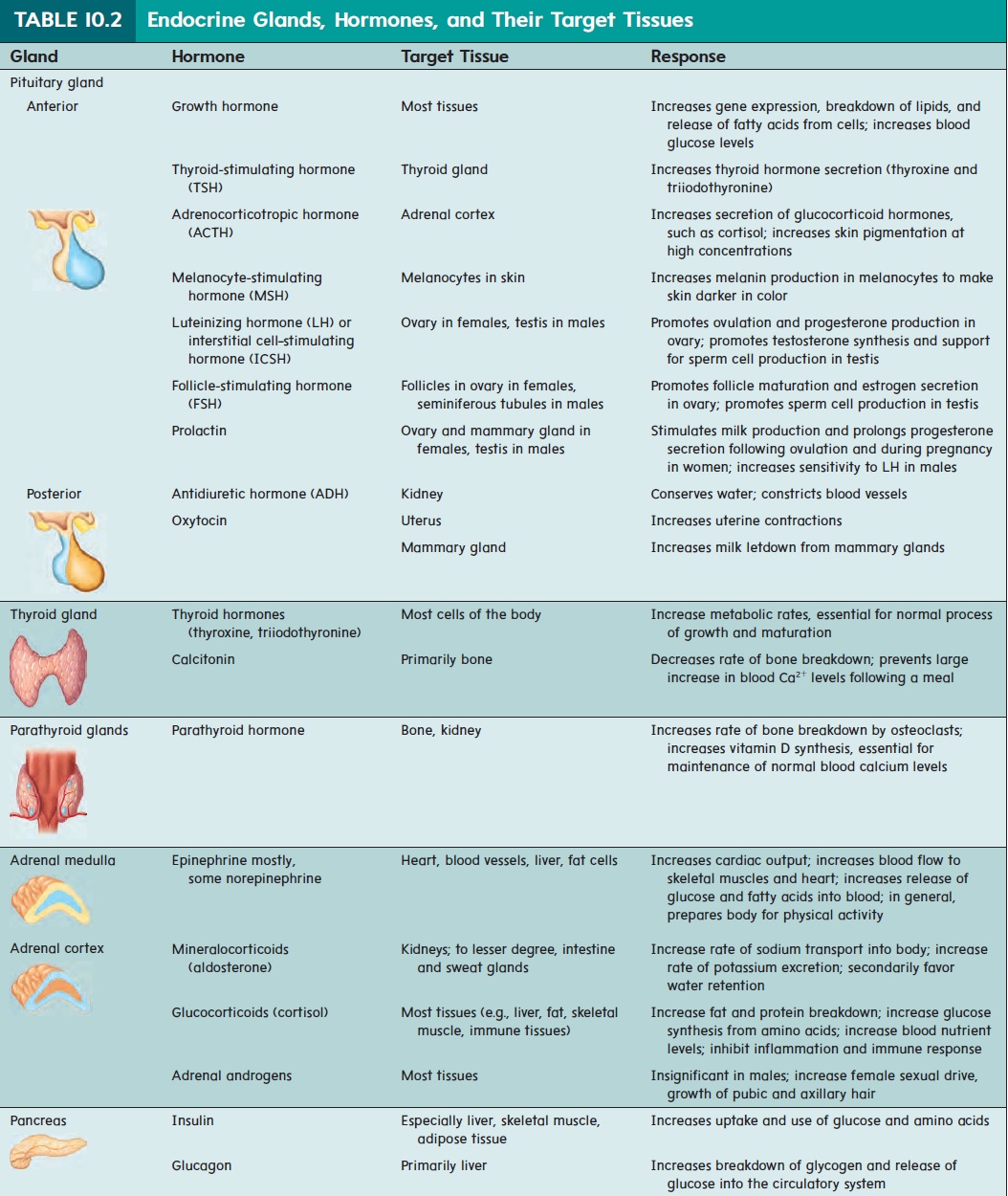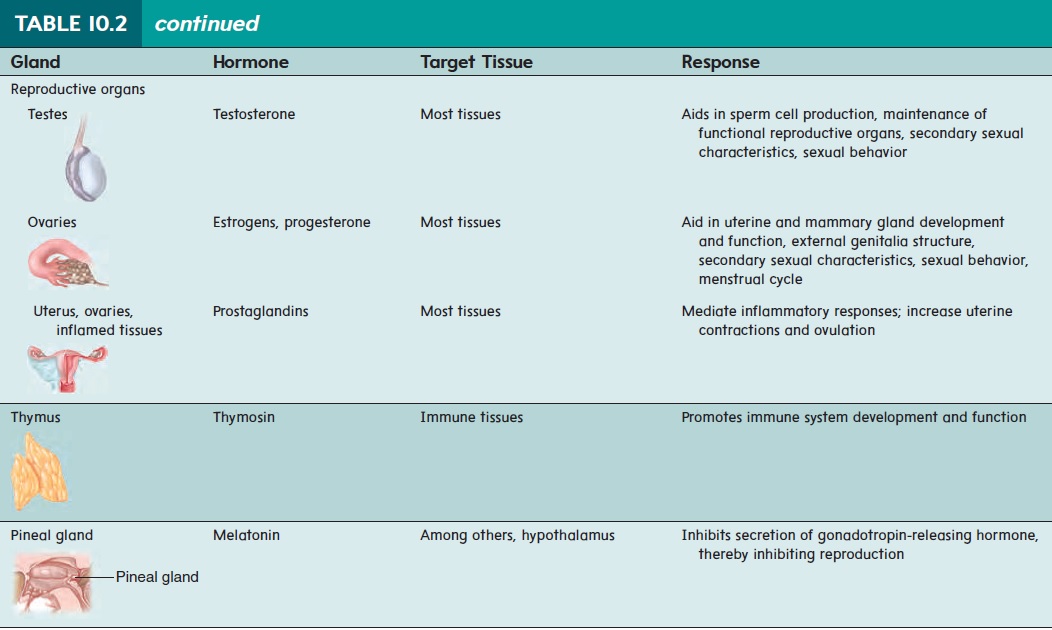Chapter: Essentials of Anatomy and Physiology: Endocrine System
Testes and Ovaries - Endocrine Glands and Their Hormones
Testes and Ovaries
The testes of the male and the ovaries of the female secrete sex hormones, in addition to producing sperm cells or oocytes, respectively. The hormones produced by these organs play impor-tant roles in the development of sexual characteristics. Structural and functional differences between males and females, as well as the ability to reproduce, depend on the sex hormones (see table 10.2).
The main sex hormone in the male is testosterone (tes′ tos′ tĕ-rōn), which is secreted by the testes. It is responsible for the growth and development of the male reproductive structures, muscle enlargement, the growth of body hair, voice changes, and the male sexual drive.
In the female, two main classes of sex hormones, secreted by the ovaries, affect sexual characteristics: estrogen (es′ trō-jen) and progesterone (prō-jes′ ter-ōn). Together, these hormones contribute to the development and function of female reproduc-tive structures and other female sexual characteristics. Two such characteristics are enlargement of the breasts and the distribution of adipose tissue, which influences the shape of the hips, breasts, and thighs. In addition, the female menstrual cycle is controlled by the cyclical release of estrogen and progesterone from the ovaries.
LH and FSH stimulate the secretion of hormones from the ovaries and testes. Releasing hormone from the hypothalamus controls the rate of LH and FSH secretion in males and females. LH and FSH, in turn, control the secretion of hormones from the ovaries and testes. Hormones secreted by the ovaries and testes also have a negative-feedback effect on the hypothalamus and anterior pituitary.


Related Topics